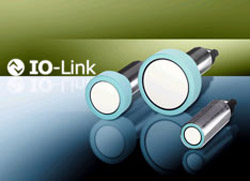IO-Link-compatible ultrasonic proximity switch for large sensing ranges

They are characterized by the high IP67 degree of protection, a significantly reduced blind zone, and a more compact design. Very little space is required at the machine.
The operating mode is convertible so that the new products can be used universally – as retroflective sensors, pushbuttons, or analog sensors. Typical applications include level detection, distance control, stack height detection, loop control, and monitoring of roller diameters.
The IO-Link compatibility of the new proximity switches offers users a number of advantages. These include, for example, simple and rapid device replacement without downtimes, with automatic reparameterization, monitoring of sensor status and temperature, dynamic parameterization of the measuring range limits, and rapid preventive diagnosis of disruptions.
To upgrade machinery flexibly and quickly, the sensor parameters can be integrated into the recipe management of PLCs (programmable logic controllers) or HMI (human-machine interface) devices. Moreover, the configuration time is also reduced, since parameters such as attenuation and filter depth can easily be set with the Port Configurator in Step 7.
Media Contact
More Information:
http://www.siemens.com/simatic-sensors/pxAll latest news from the category: Corporate News
Newest articles

Decoding Cancer: 40 Years of Breakthroughs in Genetic Research
Cancer in children and adolescents is rare. Nevertheless, malignant diseases are still one of the most common causes of death in this age group. Survivors of childhood or adolescent cancer…

Let’s Think Before the First Drink: How Early Substance Use Might Lead to Brain Structure Differences Among Adolescents
Many differences appeared to exist prior to any substance use, pointing to the role brain structure may play in substance use risk, NIH-supported study suggests. Studies reveal factors that expose…

Combating Kidney Cancer Using Enhanced Immunotherapies
Medical University of South Carolina Hollings Cancer Center researcher receives Department of Defense Early Career Scholar Award to improve immune therapies by targeting resistant kidney tumors. A Medical University of…



